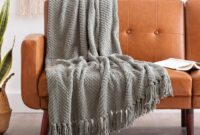Furniture Buying Guide – Becoming a homeowner is a huge milestone, and choosing the right furniture is an exciting part of making a new space feel like home. But with so many options, styles, and budget considerations, buying furniture for the first time can also be overwhelming. This guide will walk you through everything you need to know to furnish your home with style, functionality, and longevity in mind.
In this furniture buying guide, we’ll cover the essentials, including how to set a budget, choose quality pieces, understand your style, and shop smartly. Whether you’re moving into a new home with a clean slate or bringing a few items with you, these tips will help you make informed decisions that suit your space and lifestyle.
Table of Contents
ToggleWhy Planning Matters When Buying Furniture
When you’re buying furniture as a first-time homeowner, it’s easy to feel tempted by beautiful showrooms or sales. But buying furniture without a plan can lead to unnecessary expenses, mismatched styles, and even clutter. Planning your furniture purchases means prioritizing essential pieces, understanding the space and function, and setting a realistic budget. This process will help you buy quality items that will last and grow with you over time.
Key Points of Planning:
- Decide on a budget that balances affordability with quality.
- Measure your space to ensure furniture will fit and flow well.
- Understand your style so you can create a cohesive look.
Essential Furniture Pieces for First-Time Homeowners
When furnishing your new home, it’s wise to start with essential pieces that cover the basics. Once you have the essentials, you can add more personal touches and accessories over time.
Sofa or Seating for the Living Room
The sofa is often the focal point of the living room, and it’s likely to be one of the most-used pieces in your home. Choose a comfortable and durable sofa that fits the size of your space and aligns with your style.
- Choose quality: Look for solid wood frames, high-density foam cushions, and stain-resistant fabrics.
- Consider the size: Measure the area and think about the number of people you’ll need to seat. For small spaces, consider a loveseat or sectional that fits in a corner.
- Pick a versatile style: Neutral colors and classic designs are easy to match with other pieces as your style evolves.
Dining Table and Chairs
Your dining table will serve as a place for meals, gatherings, and even work or hobbies, so it’s important to choose a table that is both functional and fits your needs.
- Size matters: Measure your dining area, leaving space for chairs to be pulled out comfortably. For small spaces, consider round tables or extendable tables that can be adjusted for more seating.
- Material and durability: Look for sturdy materials like solid wood, which holds up well over time. Glass or metal may fit a modern style but can be more delicate.
- Comfortable seating: Opt for chairs that are both comfortable and easy to clean, especially if you plan on frequent gatherings.
Bedroom Basics: Bed Frame and Mattress
Investing in a quality bed frame and mattress is crucial, as quality sleep is essential for a healthy lifestyle. Your bedroom is a sanctuary, so make sure it’s as comfortable and restful as possible.
- Choose a supportive mattress: Mattresses are a personal choice; some prefer a firmer feel, while others prefer something softer. Try different options, and if possible, go for a trial period.
- Sturdy bed frame: A strong, durable bed frame that supports the mattress and adds style to the room is key. Platform beds with storage underneath can be a great option for smaller bedrooms.
- Bedroom storage: Consider adding a dresser, nightstands, or a storage bench for added organization.
Storage Solutions
Storage is essential for keeping your home tidy and functional. Shelving units, cabinets, dressers, and closets are some of the key pieces to consider. Look for storage that matches your needs and complements the layout of each room.
- Built-in storage or modular options: Built-in storage or modular units can maximize space without taking up too much floor area.
- Multi-functional furniture: Items like ottomans with storage, beds with drawers, or benches that open up are great for small homes with limited space.
- Closet organizers: If your home has limited closet space, invest in organizers to make the most of every inch.
Home Office Furniture
Even if you don’t work from home, having a dedicated workspace is increasingly important for organization and productivity. Choose a desk that fits your space and has enough storage for your needs, and consider a comfortable chair for longer work sessions.
- Desk size and storage: Look for a desk that offers enough workspace for a laptop or desktop and provides a place for office supplies.
- Ergonomic chair: A good office chair can prevent back pain and improve posture. Invest in one that offers adjustable support.
- Location: Place your desk in a quiet, well-lit area to create a focused and comfortable work environment.
Setting a Budget: How Much Should You Spend on Furniture?
As a first-time homeowner, it’s essential to set a realistic budget for furniture. Quality furniture can be an investment, but you don’t need to furnish every room at once. Start with essential pieces and gradually add more as your budget allows.
Tips for Setting a Budget:
- Prioritize essentials first: Allocate the most significant portion of your budget to essential items like a bed, sofa, and dining set.
- Consider financing options: Many furniture stores offer financing or payment plans, which can help spread out costs if needed.
- Look for sales: Seasonal sales, holiday discounts, and end-of-year clearance events are great times to find deals on quality furniture.
| Furniture Piece | Estimated Cost Range |
|---|---|
| Sofa | $500 – $2,500 |
| Dining Table | $300 – $1,500 |
| Bed Frame | $200 – $1,200 |
| Mattress | $300 – $2,000 |
| Desk & Chair | $200 – $1,000 |
Prices vary based on materials, brand, and location, but understanding a range can help you set a realistic budget.
How to Identify and Define Your Style
Your furniture should reflect your personal style, and as a first-time homeowner, this may be your first chance to create a cohesive look for your home. Whether you love the clean lines of modern furniture, the warmth of traditional styles, or a blend of different styles, defining your aesthetic will make furniture shopping easier.
Steps to Discover Your Style:
- Browse online inspiration: Look through websites, magazines, or social media platforms like Pinterest to find styles you like.
- Pick a color palette: Colors play a big role in setting the mood of a room. Choose neutral tones for a minimalist look or bolder shades for a vibrant feel.
- Mix and match: Don’t be afraid to combine different styles for a unique look. You can mix vintage pieces with modern ones for an eclectic, personalized feel.
- Start with a focal point: Begin with a key piece, like a sofa or bed, and build around it. This helps guide other furniture choices in terms of style, color, and scale.
Tips for Smart Furniture Shopping
Measure Twice, Buy Once
Before buying any furniture, measure your space and doorways. Many homeowners make the mistake of buying pieces that don’t fit through doors or are too large for the room.
Choose Quality Over Quantity
It’s tempting to buy everything at once, but quality is key for long-lasting furniture. Opt for well-made, durable pieces that will stand up to daily use.
Consider Multi-Functional Furniture
For smaller homes, multi-functional pieces can save space and add versatility. Look for options like sofa beds, nesting tables, or ottomans with hidden storage.
Think About Long-Term Use
Choose furniture that will last through trends and style changes. Classic, neutral pieces are often a good choice, as you can update the look with accessories over time.
Shop Local and Online
Check out local furniture stores, which often offer unique pieces and personalized service. Online shopping gives you a broader range of options, but always check return policies and delivery fees.
Conclusion: Furnishing Your First Home with Style and Purpose
Furnishing your first home as a new homeowner is an exciting journey, and with the right planning, it can be both manageable and enjoyable. Start by focusing on essential pieces that will serve your needs and reflect your style. Prioritize quality, consider functionality, and be patient—adding to your home over time allows you to build a space that truly reflects who you are.
Whether you’re looking for modern, classic, or eclectic pieces, taking the time to find furniture that fits both your lifestyle and aesthetic will make your home a welcoming and comfortable space for years to come.




